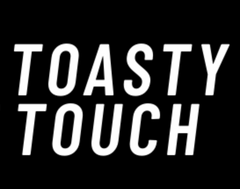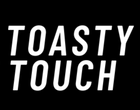What We Actually Know About Raynaud’s
Raynaud’s was first described in medical literature by a French doctor way back in 1862, and yet it remains a mystery to this day.
Why are women so much more likely to have it? (Even in Maurice Raynaud’s initial study group, 20 of his 25 patients were female).
We don’t know the answer to that.
What causes Raynaud’s? Can it be reversed?
We don’t know the answer to that.
So what do we actually know about this disorder that causes fingertips and toes to turn white in response to the cold?
We know how to pronounce it. Well, sort of. Technically, “Ray-NOZE” is correct, but since it’s been mispronounced as “Ray-NODS” so consistently and for such a long time, “Ray-NODS” has become an acceptable pronunciation – even by leaders in the field.
What else?
We know it causes the tiny blood vessels that branch out and get tinier and tinier as they approach the furthest extremities of our bodies to spasm in response to perceived chilliness and, in turn, block blood flow. This is what causes the abrupt white fingertips that have alarmed countless Raynaud’s sufferers.
We know that Raynaud’s can be a primary or secondary condition.
Primary Raynaud’s means the disorder is a stand-alone issue that isn’t the result of a more widespread disease process. Primary Raynaud’s is usually a lot less severe. For example, primary Raynayd’s flare-ups often occur only occasionally and in genuinely cold situations.
Secondary Raynaud’s means the disorder is linked to or the result of another issue in the body, such as an autoimmune disease. Scleroderma, mixed connective tissue disease, lupus, Sjogren’s syndrome, and CREST syndrome are some of the main illnesses tied to secondary Raynaud’s. Blood tests can help your doctor determine whether your Raynaud’s is primary or secondary.
Unfortunately, secondary Raynaud’s is often more severe. Flare-ups happen more frequently and in circumstances in which no one else seems bothered by the cold, such as on frozen food aisles or in chilly AC.
We know that applying heat helps! Ultra-thin heated gloves let people with Raynaud’s move confidently through their worlds without constant fear of flare-ups.
Feel your fingers going numb? No problem, reach into your purse and grab your charged-up, ready-to-go Toasty Touch gloves! That’s exactly what I do, and I have a new lease on life.
When I first got Raynaud’s, I tried everything. I scoured the Internet for hours on end and purchased all sorts of non-heated and heated gloves. While many of the gloves were marketed to people with Raynaud’s, the gloves were really made for outdoor sports. They were either not warm enough or too thick to actually use my fingers and hands to do everyday tasks. I realized that the very thin heated gloves I needed didn’t exist, and Toasty Touch was born.
Now there is a solution for my fellow frosties and me! When we first designed and created the gloves, we didn’t know for sure whether they’d be a hit. I knew I loved them, but would others? Uh, yes!!! Resounding yes yes yes.
If you check out our Reviews, you’ll see that, even though Raynaud’s is maddening and frustrating and still so very … not figured out by medical science, Toasty Touch is improving people’s lives in truly meaningful ways.
Join the Toasty revolution, and help us spread the word to a frosty you love.




For years I have suffered with Raynauds Disease as well as Rheumatoid Arthritis, and my hands are slowly but surely suffering from both of these affliction’s. With driving a School Bus, and having to be out in the Cold clearing a bus, plowing and shoveling snow I don’t know how I will make it but, after seeing these gloves my days will be much better!
Leave a comment